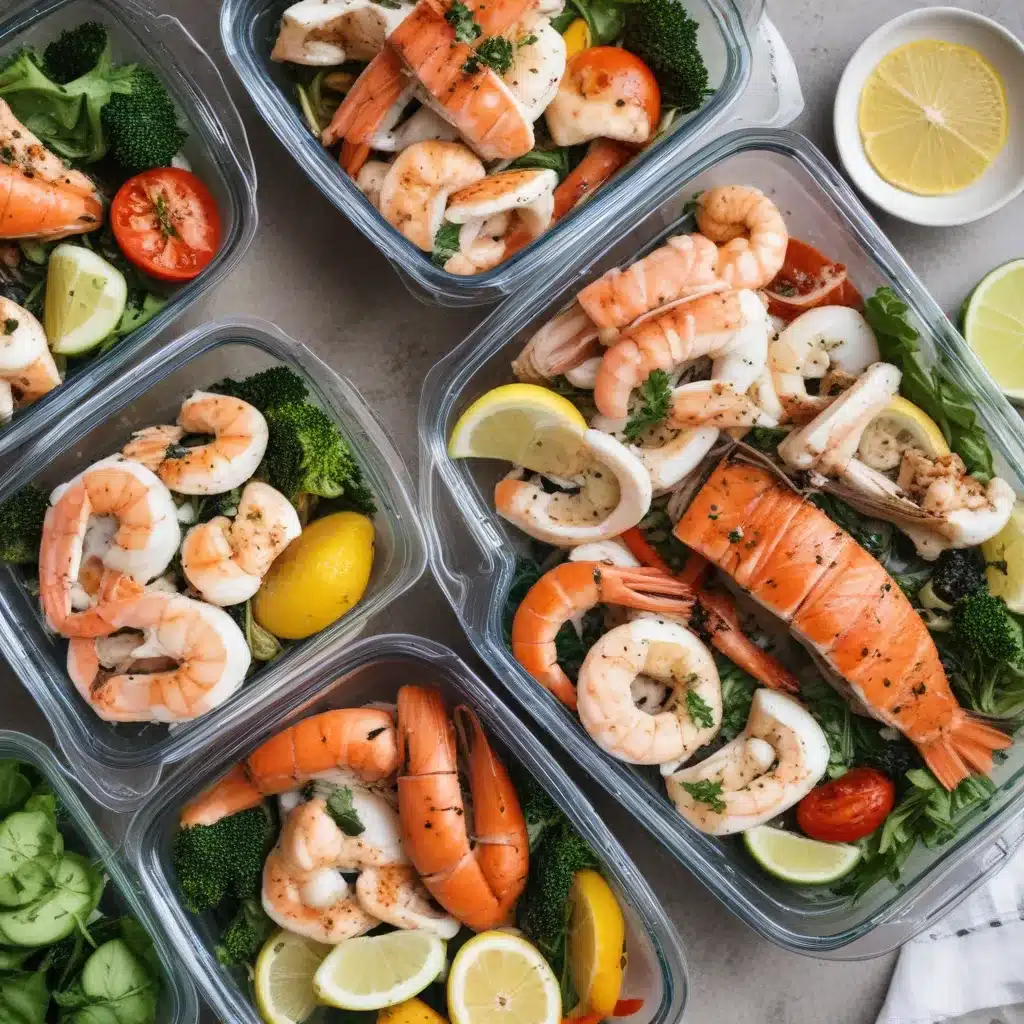
As a seafood dining expert at Fish Tales Cafe, I’m here to share my top tips for mastering seafood storage and meal prep. Whether you’re a seasoned home chef or just starting to explore the world of cod, salmon, or other delectable ocean fare, the key to stress-free seafood-centric cooking lies in proper handling and preparation.
Let’s dive in and uncover the secrets to keeping your fish and shellfish fresh, flavorful, and ready to transform into culinary masterpieces.
Seafood Storage Essentials
Proper refrigeration and freezing techniques are essential for maintaining the quality and safety of your seafood. When it comes to cod, for example, you’ll want to store it in the coldest part of your fridge, ideally below 40°F (4°C). Fresh cod fillets can typically last 1-2 days in the refrigerator, while whole cod can be kept for up to 3 days.
For longer-term storage, freezing is your best friend. Wrap cod fillets or steaks tightly in plastic wrap or freezer paper, then place them in an airtight container or resealable bag. Properly frozen cod can maintain its quality for up to 6 months. When ready to use, thaw the cod in the refrigerator, never at room temperature, to prevent bacterial growth.
Identifying signs of freshness is also crucial. Look for cod with a bright, translucent color, firm texture, and a mild, ocean-fresh aroma. Avoid any fish that appears discolored, has a strong fishy smell, or feels soft or mushy.
Meal Prep Strategies
One of the most time-saving tricks for seafood-based meals is batch cooking. Prepare extra portions of baked cod or grilled salmon on the weekend, then enjoy them throughout the week in salads, wraps, or as standalone entrees. Portioning and labeling your pre-cooked seafood with the date and contents will help you stay organized and reduce food waste.
For even quicker meals, consider seafood that requires minimal prep, such as shrimp, scallops, or canned tuna. These versatile ingredients can be added to pasta dishes, stir-fries, or served over a bed of greens for a nutritious and satisfying meal.
Another helpful strategy is to have a selection of gluten-free or grain-free seafood-centric recipes on hand, such as cod en papillote (baked in parchment paper) or ceviche (raw seafood “cooked” in citrus juice). These dishes offer delicious, protein-packed alternatives for those with dietary restrictions.
Seafood Handling Safety
To ensure your seafood meals are not only delicious but also safe, it’s essential to follow proper handling guidelines. Always keep raw seafood separate from other ingredients to prevent cross-contamination. Use separate cutting boards and utensils, and wash your hands thoroughly after handling raw fish or shellfish.
Maintain a close eye on temperature control as well. Perishable seafood should be kept at 40°F (4°C) or below, both during storage and preparation. When transporting seafood home from the market, pack it in an insulated cooler with ice to maintain the proper temperature.
Proper disposal of seafood waste is also crucial. Never pour cooking liquids or leftover fish down the drain, as this can clog pipes and potentially harm the environment. Instead, seal any waste in a plastic bag and discard it in the trash or explore composting options.
Culinary Inspiration
With your seafood storage and prep strategies in place, the possibilities for delicious, gluten-free meals are endless. Consider experimenting with global seafood traditions, such as Mediterranean-style baked cod with olives and lemon, or Asian-inspired salmon poke bowls.
When it comes to flavor pairings, the options are truly limitless. Try marinating cod in a citrus-herb vinaigrette or baking salmon with a maple-mustard glaze. Elevate your seafood dishes with a glass of crisp, dry white wine, such as a Sauvignon Blanc or Pinot Grigio, which can help balance the richness of the fish.
And don’t forget the health benefits of incorporating more seafood into your diet. Cod, for example, is an excellent source of lean protein, vitamins, and essential omega-3 fatty acids that support heart and brain health. Other fish like salmon, tuna, and halibut offer similar nutritional advantages, making them a valuable addition to any well-rounded, gluten-free meal plan.
Sustainable Seafood Sourcing
As you build your repertoire of seafood-centric recipes, it’s also important to consider the environmental impact of your choices. Look for sustainable, eco-friendly options, such as wild-caught or responsibly farmed cod, salmon, or shrimp.
Connecting with local fishmongers or exploring Community Supported Fishery (CSF) programs can help you identify the freshest, most seasonally available seafood in your area. By supporting sustainable practices, you can enjoy your favorite fish dishes while also contributing to the long-term health of our oceans.
Reducing Seafood Waste
One of the best ways to streamline your seafood meal prep is to minimize waste. Utilize every part of the fish or shellfish, whether it’s simmering cod bones to make a flavorful broth or repurposing leftover grilled salmon in a seafood salad.
Don’t be afraid to get creative with seafood scraps and trimmings, either. Incorporate them into fish cakes, chowders, or even composting to reduce your environmental footprint.
Storage Solutions for Small Kitchens
If you’re working with limited counter and storage space, there are still plenty of strategies to keep your seafood fresh and organized. Maximize your refrigerator and freezer capacity by using stackable or space-saving containers specifically designed for fish and shellfish.
Explore alternative seafood storage solutions, such as vacuum-sealing or canned options, which can free up valuable real estate in your kitchen. And don’t forget to get creative with your organization, using labeled bins, rotating shelves, or hanging racks to ensure you can easily access your seafood when the craving strikes.
By mastering the art of seafood storage and meal prep, you’ll be well on your way to enjoying delectable, gluten-free seafood dishes with ease. So dive in, experiment, and discover the joy of stress-free, seafood-centric cooking. For more inspiration, be sure to visit Fish Tales Cafe for a wealth of recipes, tips, and seafood-related resources.

